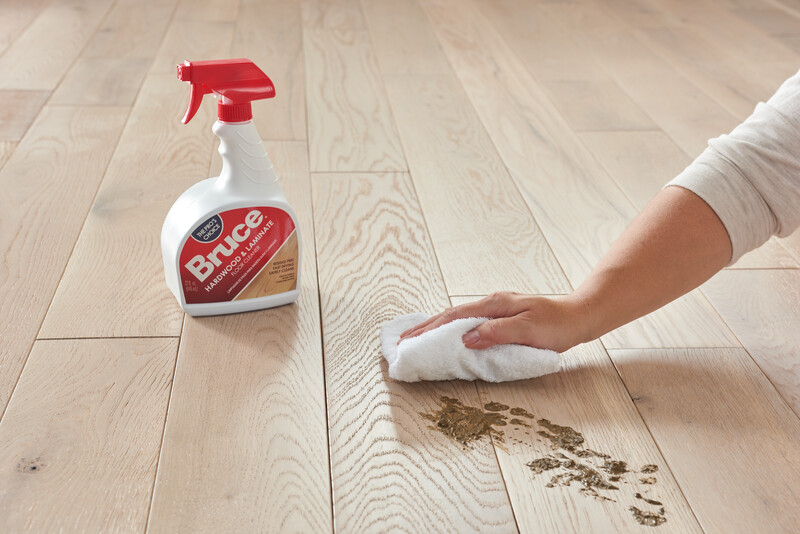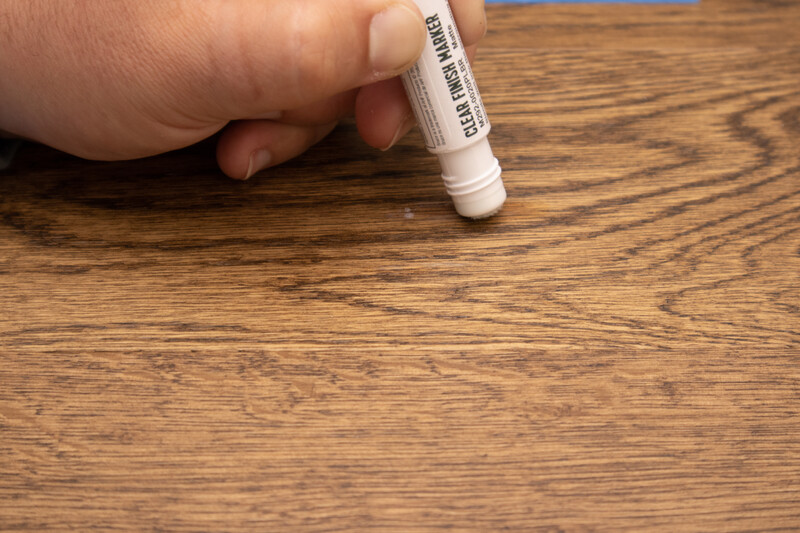The Ultimate Guide to Hardwood Floor Care
April 7, 2025
For many, hardwood floors are the cat’s meow. They add warmth, charm, and value to your home.
However, like any investment, wood floors require regular care to maintain their good shape. Following best floor care practices will protect your floors and keep them looking great for years to come.

Know Your Wood Floor Type
Before cleaning or using any product, determine the type of floor you have – solid or engineered hardwood. That’s especially important in understanding your restoration options.
Solid hardwood flooring planks are a single piece of wood. You can sand and refinish them several times. Three-quarter-inch planks let you do so four to six times.
Engineered hardwood flooring features a genuine wood top layer and a plywood base. That construction makes it more stable in areas with moisture or changing temperatures.
However, the standard thickness of the top layer is 1/16 inches. You can only refinish that once or twice. Higher-quality engineered hardwoods are available in thicknesses ranging from 3/32 to 1/8 inch. You can rework those thicknesses three or four times.
Some engineered hardwoods, such as Hydropel®, are waterproof. Refinishing them may impact your warranty. However, the good news is that Bruce® includes a lifetime warranty.
Daily Wood Floor Care Tips
A little care each day goes a long way. Dust, dirt, and grit can damage your floors over time, particularly in high-traffic areas such as hallways and kitchens.
Here’s what to do:
- Sweep or vacuum daily using a soft broom or a vacuum specifically designed for hardwood floors. Avoid the beater bar, which can scratch the surface.
- Use a microfiber mop to trap fine dust.
- Put area rugs at entrances to catch dirt before it spreads.
- Add felt pads under furniture legs to prevent scratching.
- Keep pet nails trimmed to avoid scuffs.
These simple wood floor care habits help reduce wear and keep them looking clean with minimal effort.
Weekly and Deep Cleaning of Hardwoods
Once a week, or more frequently in busy areas, give your floors a thorough clean. Use a dedicated hardwood flooring cleaner, like Bruce Hardwood & Laminate Floor Cleaner. This wood floor cleaner is safe, easy to use, and won’t leave a dull film.

5 Tips for Deep-Cleaning Hardwood Floors
Deep-cleaning hardwood floors doesn’t require intense effort—but it does require the right approach. Using the wrong tools or products can cause damage, dull the finish, or leave behind residue. Follow these five simple tips to deep-clean your floors and keep them looking their best safely.
- Spray the wood floor cleaner directly on the floor or onto your microfiber mop.
- Wipe gently, following the grain of the wood.
- Never use a wet mop or excessive water—excess water can seep into the wood, causing swelling or warping. If you do, ensure you wring it out to avoid putting standing water on your floors.
- Avoid using oil soap, oil-based products, or any other products containing harsh chemicals. These can damage the floors or make them slippery. They can also dull the finish of your hardwood.
- If you spill something, clean it up right away. Leaving liquid on the floor can cause stains, buckling, or permanent damage.
Seasonal Hardwood Floor Care
Wood expands and contracts in response to changes in temperature and humidity. During winter, dry air can make floors shrink and crack. In the summer, excessive moisture can cause them to swell.
Maintain indoor humidity between 35% and 55%. Use a humidifier in winter and a dehumidifier in humid months. Controlling moisture levels helps prevent expansion and contraction, which can cause stress to your hardwoods.
Long-Term Maintenance of Wood Floors
Over time, even well-cared-for floors can show signs of wear. If you’re a pet lover, you’re aware of the impact of dog nails on wood floors. If your floors look dull, scratched, or uneven, it might be time for a refresh.

Recoating your hardwoods adds a new layer of finish without the need for sanding. This approach is ideal for minor scuffs and surface wear.
Refinishing your floors involves sanding down the existing finish and reapplying a new one. This approach is most effective for deep scratches or when the original finish has worn off.
You can sometimes recoat or refinish engineered hardwood flooring depending on the thickness of the top layer. Check with the manufacturer or a professional installer first.
What to Avoid When Taking Care of Wood Floors
Knowing what not to do is just as important as what to do. So avoid any of the following:
- Wet or steam mops – too much moisture can damage solid wood floors.
- Vinegar, ammonia, or abrasive cleaning products.
- Oil-based or oil soap cleaners.
- Dragging furniture or heavy objects.
- Wearing high heels or cleats on the floor.
These activities can cause scratching, warping, or leave sticky, dull films that are hard to remove.
Protect Your Hardwood Investment
Hardwood floors are more than just part of your home—they’re an investment in style and quality. Regular wood floor care keeps them strong and beautiful, and it helps avoid costly repairs or replacements.
Here’s a quick recap:
- Sweep daily to remove dirt.
- Use a wood floor cleaner weekly with a microfiber mop.
- Avoid excess water, oil soap, and wet mops.
- Use rugs and pads to prevent scratching.
- Maintain steady indoor humidity.
- Use Bruce-approved products for best results.
Bruce® Hardwood Floors Last a Long Time.
By sticking to the hardwood floor care tips above, you can keep your floors looking great—and make them last a lifetime.
Just don’t overlook the importance of starting with quality. Bruce solid hardwood floors, like Dundee oak flooring, come with a lifetime warranty. Plus, they’re made in the USA using hardwoods sourced primarily from the Appalachian region.
Clean smart. Choose quality. Trust the brand that has been part of American homes for generations. America is built on Bruce floors.
